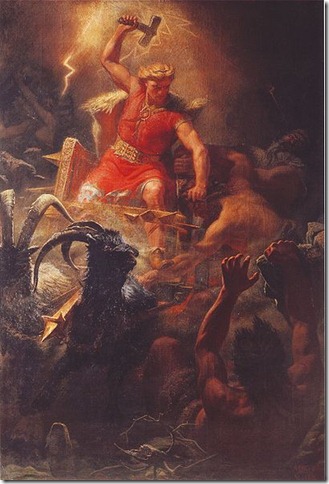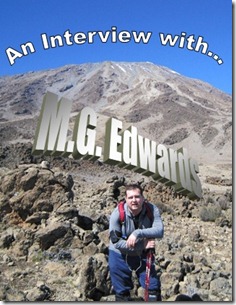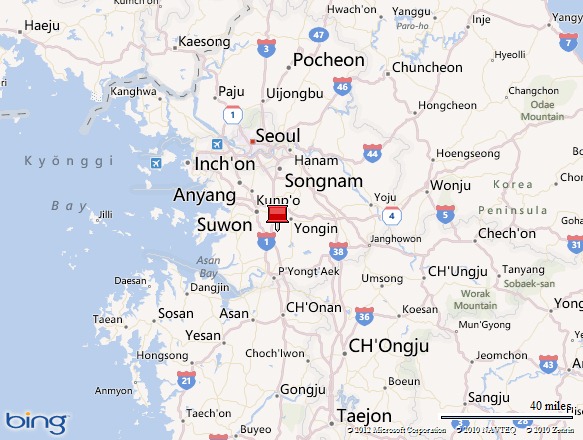This is an update of two blog posts I published in July 2005 about our first visit to the Korean Folk Village near Seoul, South Korea. Although other folk villages in Korea also showcase traditional Korean architecture and culture, this is the one most locals think of when they hear the term “Korean Folk Village.” The village is featured on my list of Top Ten Things to Do in Korea. This post combines the original two posts into one and includes photos. The original posts are here and here.
My family ventured July 15 to the Korean Folk Village in Yongin, an exurb of Seoul. Reputed to be one of the best daytrips out of the city, it lived up to its reputation. If you visit Seoul and only have time for one daytrip, this is a great place to go.
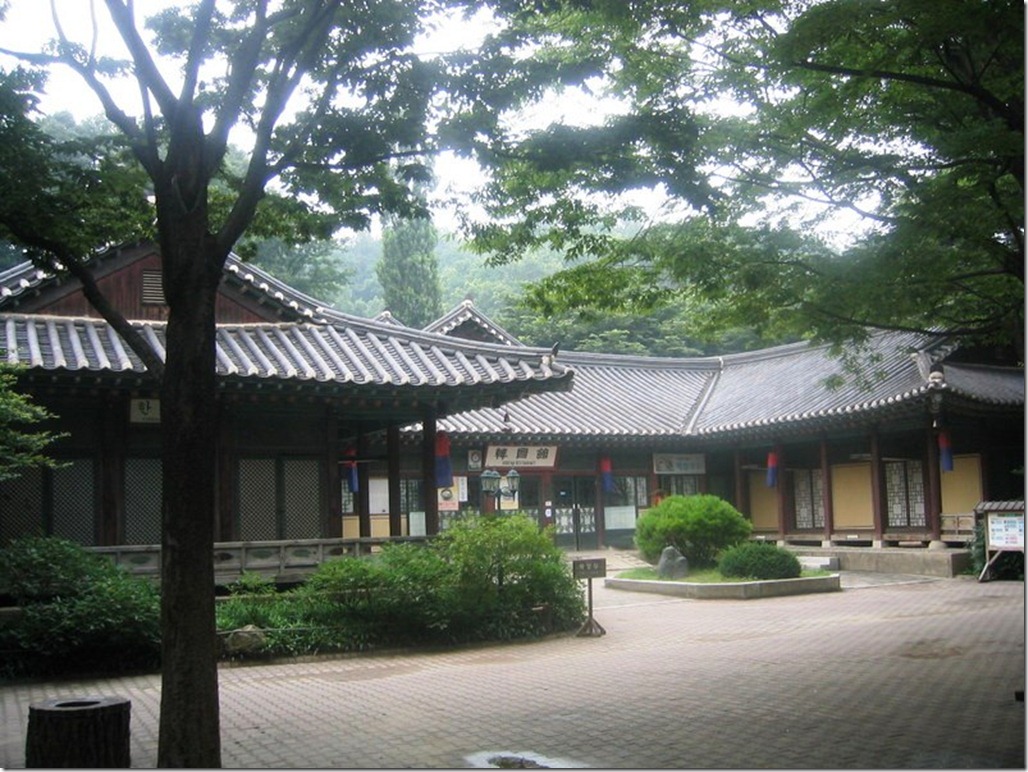
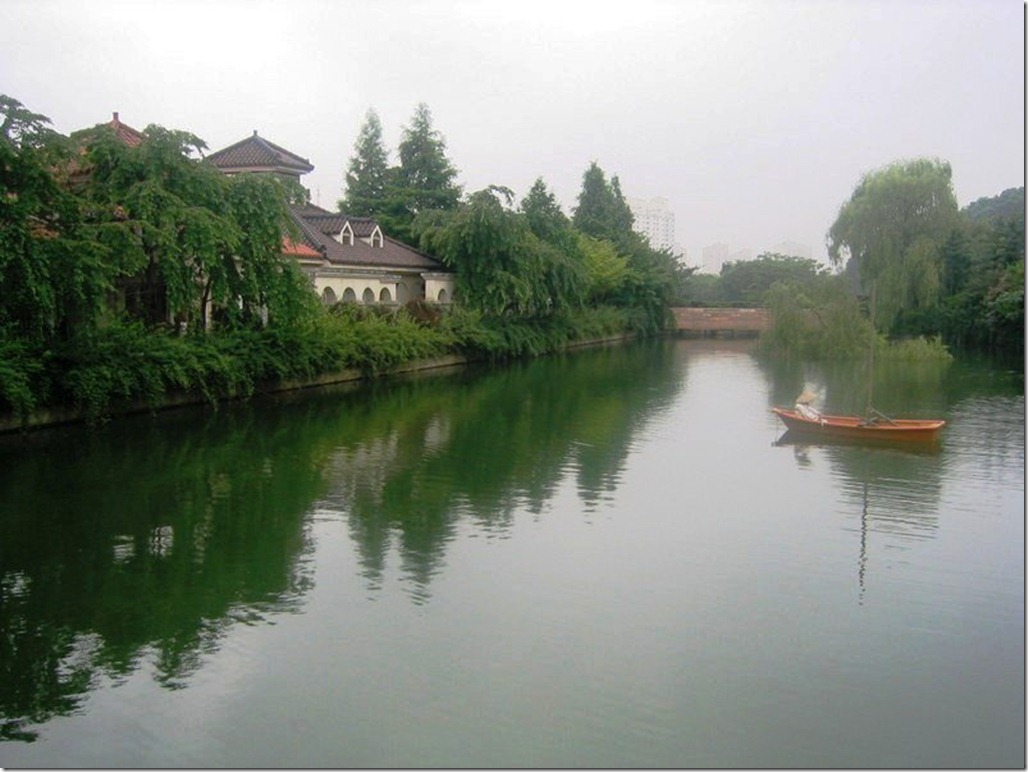
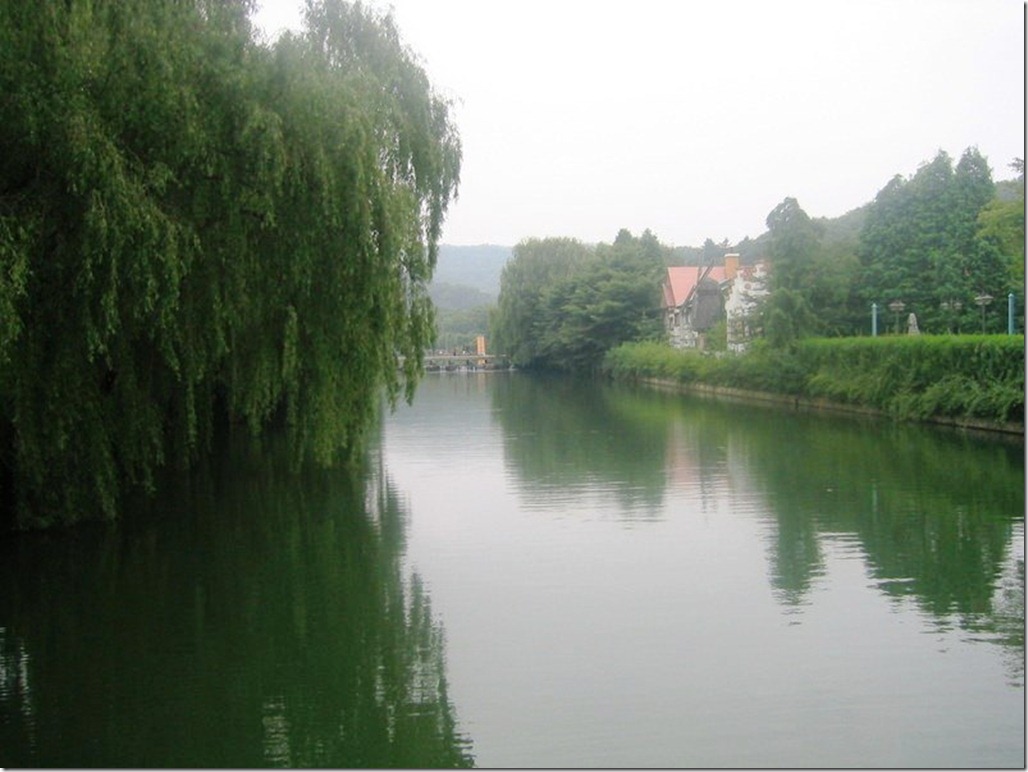
Opened in 1974, the village is the grandest of all the folk villages dotting South Korea. Although it was built as a tourist attraction, it’s fully functional. Many of the employees dressed up as peasants and in hanbok (traditional Korean dress) also live there. It’s an intriguing sight to see next to the modern high-rise apartment buildings that loom next to the village gates.
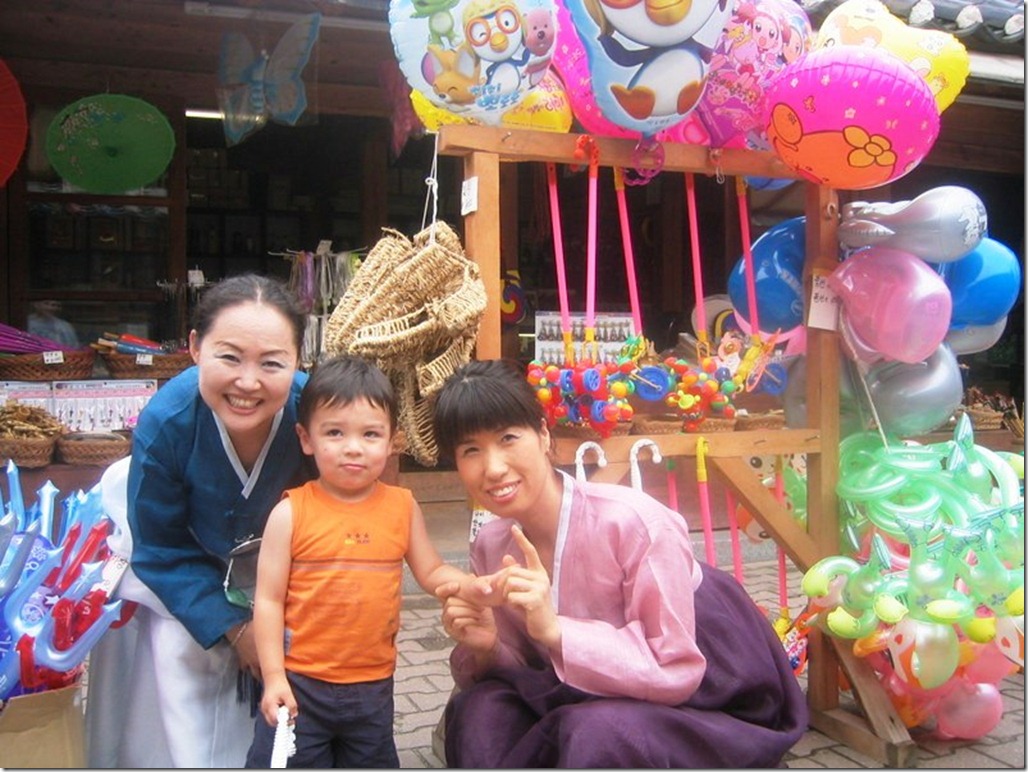
The route to the Korean Folk Village two hours south of Seoul is not well marked, and finding northbound Interstate 1 heading north is not easy.We missed the Giheung exit off Interstate 1 on our way to the village and ended up driving past it to Osan. We backtracked on an arterial road that paralleled the freeway.
By the time we arrived, we were so hungry that we stopped to eat at “Korea Restaurant” near the village gate. We thought that a restaurant with a lofty-sounding name representing the entire country had to have delicious food, but it turned out to be a cafeteria-style, massed-produced food operation with a limited selection and mediocre cuisine. All the restaurants near the entrance looked the same. At least the friendly help took a liking to our young son! If you visit, you’re better off making your way to the far end of the village and eating at the open-air village “Bazzar.” We eventually arrived at the “Bazzar” and saw some of the delicious foods sold there. Live and learn.
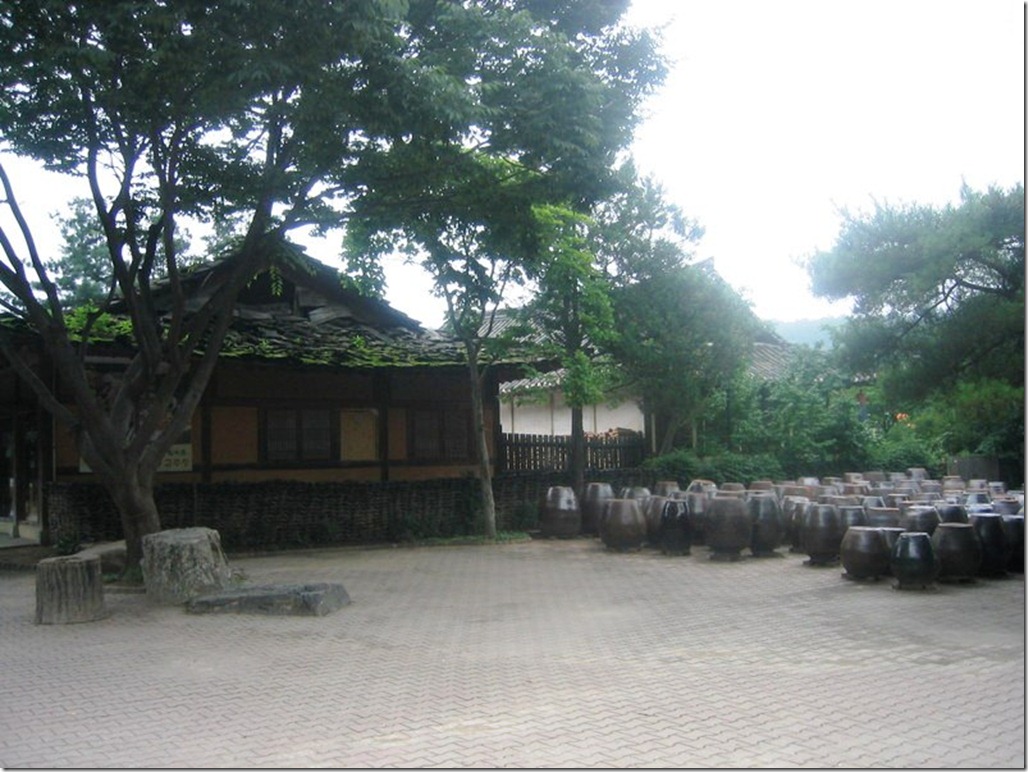
After lunch we went to “Seonangdang,” a religious shrine where one can pray to and solicit favors from the village’s guardian spirits. Koreans, like many peoples around the world, at one time carved ancestral totems out of wood. The ones in the village reminded me of the totem poles made by the Native Americans and First Peoples of the Pacific Northwest, although these totems were bit more free spirited (no pun intended). Korean totems can be whimsical and a bit chaotic with laughing, asymmetrical faces. They also follow the curvature of the wood and occasionally lean.
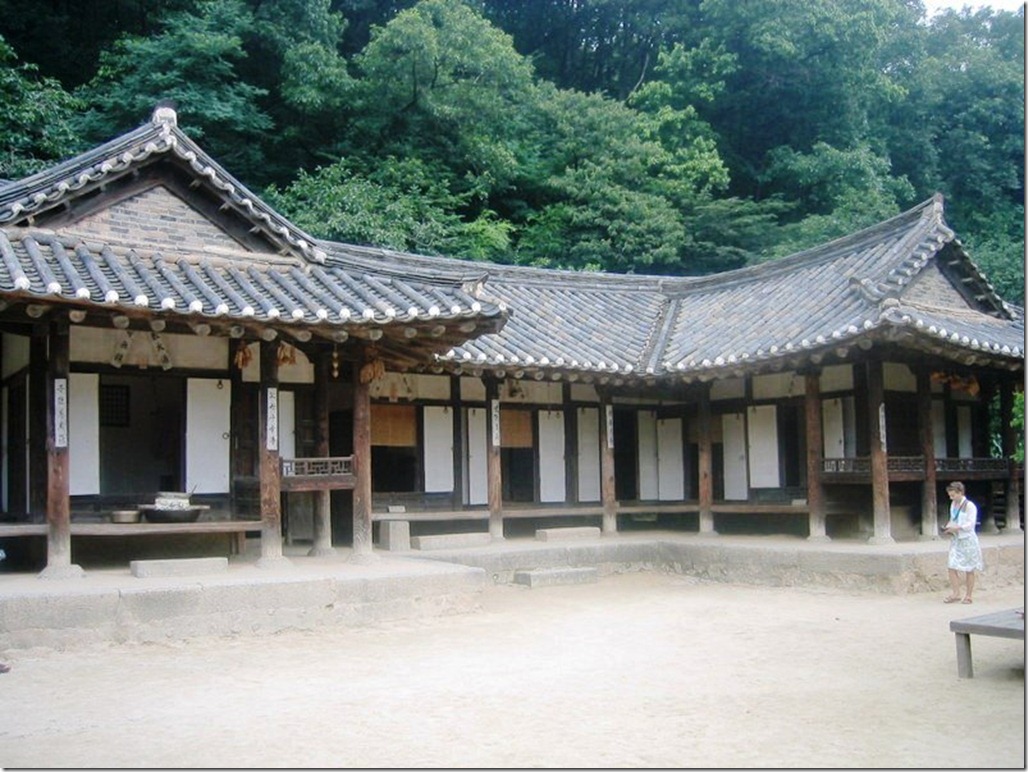
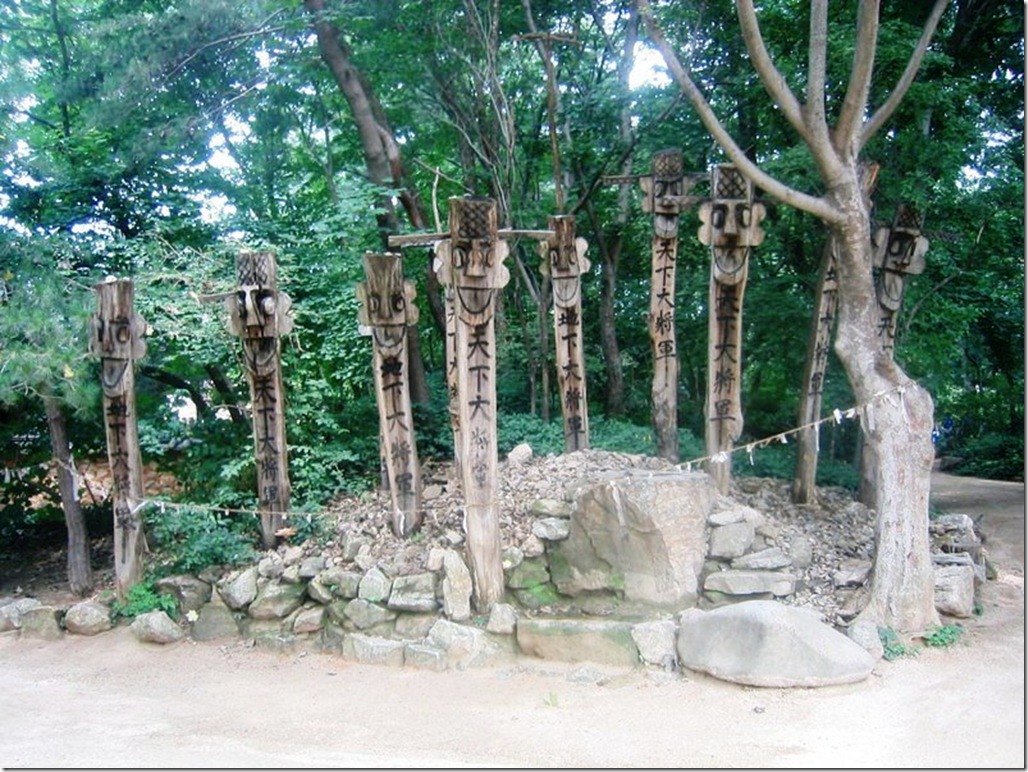
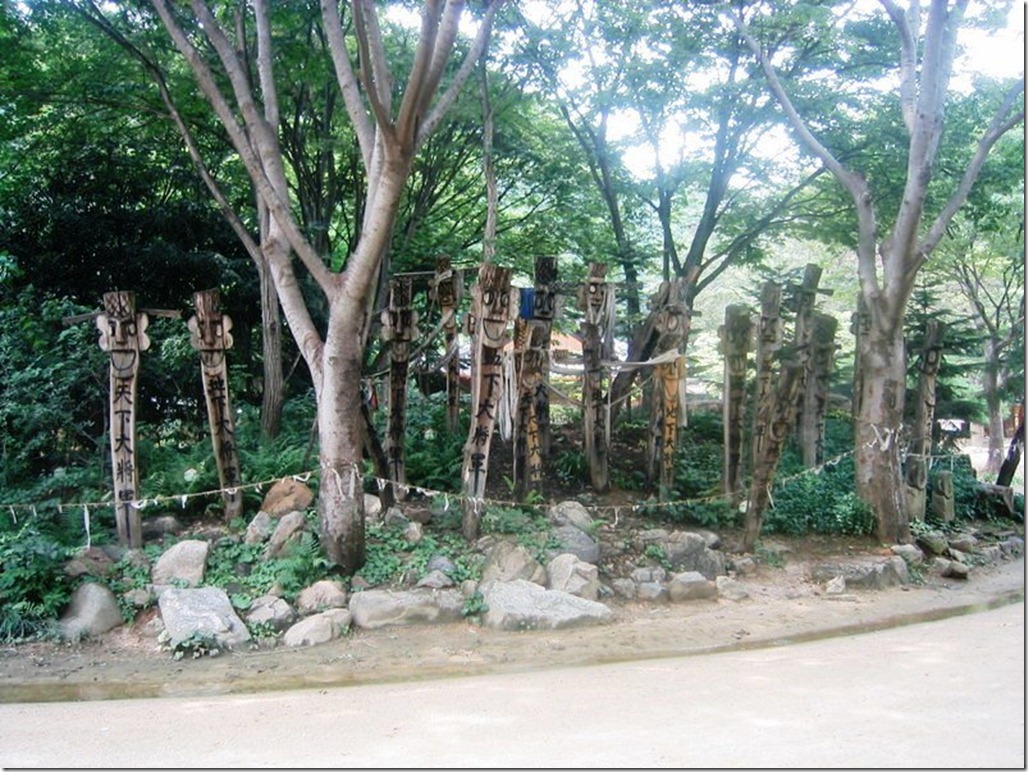
We walked to the ceramic village, where I bought my first kimchi pot (a ceramic jar used to make kimchi, not kimchi-flavored marijuana). As the national dish of Korea, kimchi is held in high regard in Korea. No meal would be complete without a side dish of spicy and sweet cabbage, radish, or cucumber kimchi. The Italian restaurant where my wife and I occasionally dine in Seoul serves sweet pickles as a substitute (western restaurants in Korea often serve sweet pickles in lieu of banchan, or side dishes).
I’ve wanted to buy a pot for quite some time because I thought they looked decorative. Mine is not too big, perhaps one gallon (two kiloliters). It’s not large enough to make enough kimchi to feed a family. To do that, you would need to buy at least a 20-gallon drum! Although I overpaid for the jar, I was happy to buy one from the shop where it was made. Knowing its source gave it character and an identity.
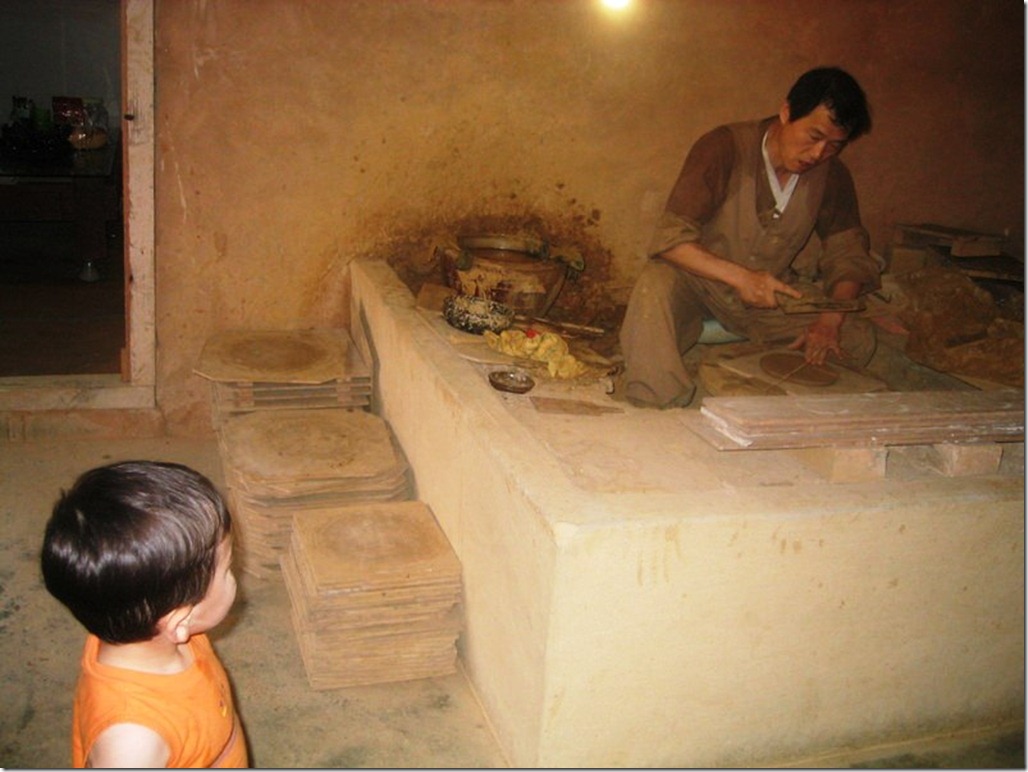
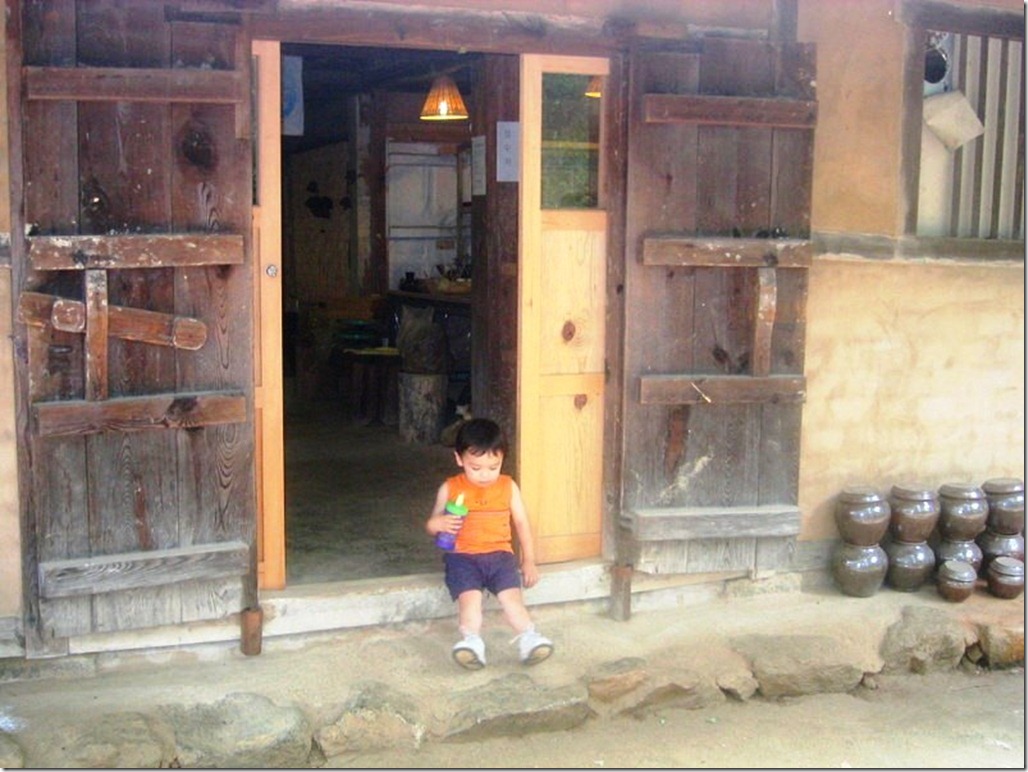
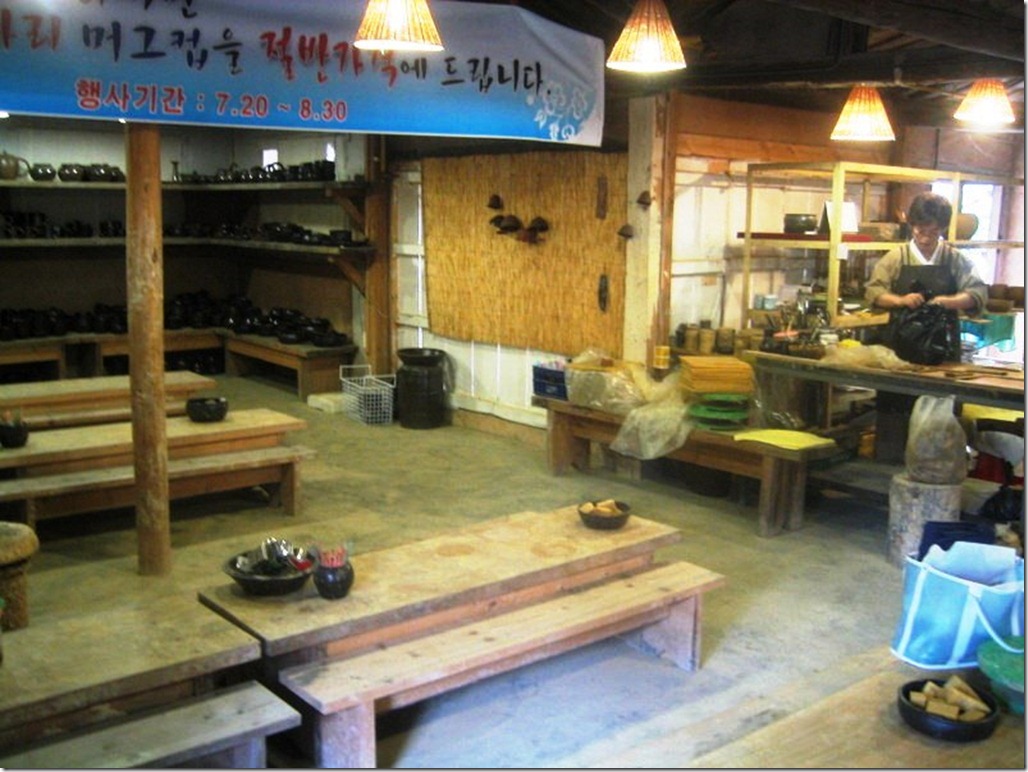
We made our way through the village and visited a replica of a typical traditional Korean peasant farm.
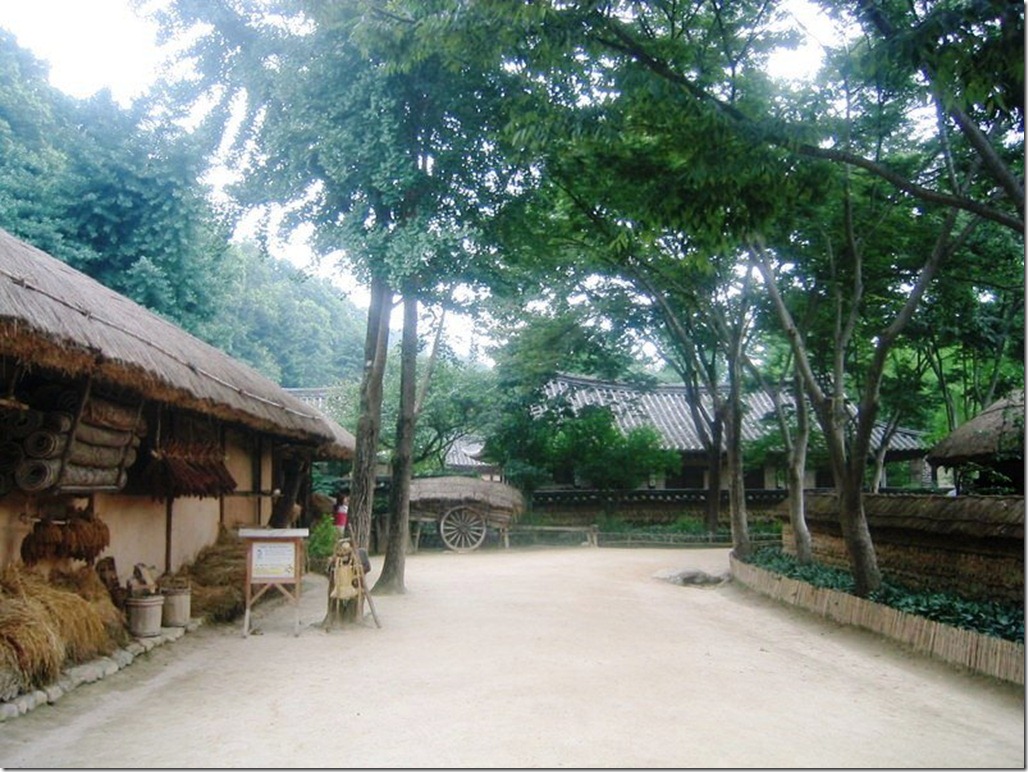
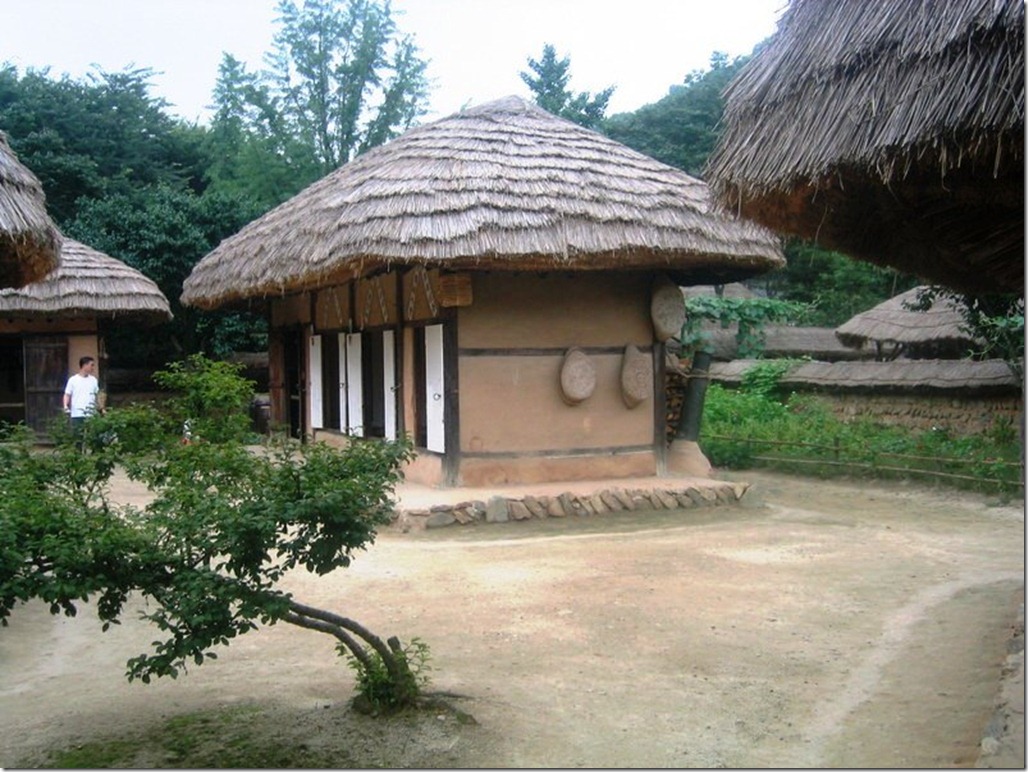
We stopped to watch two elderly women in hanbok making silk. I had never seen how it’s made. One woman boiled silkworm cocoons, killing the larvae, separating each from its cocoon and casting it aside, and helped another woman unravel silk from the cocoon. The second woman spun the raw silk thread around a spinning wheel. Watching them produce silk was fascinating. It’s amazing that such a manual, unglamorous process ends with the creation of one of the world’s most luxurious fabrics.
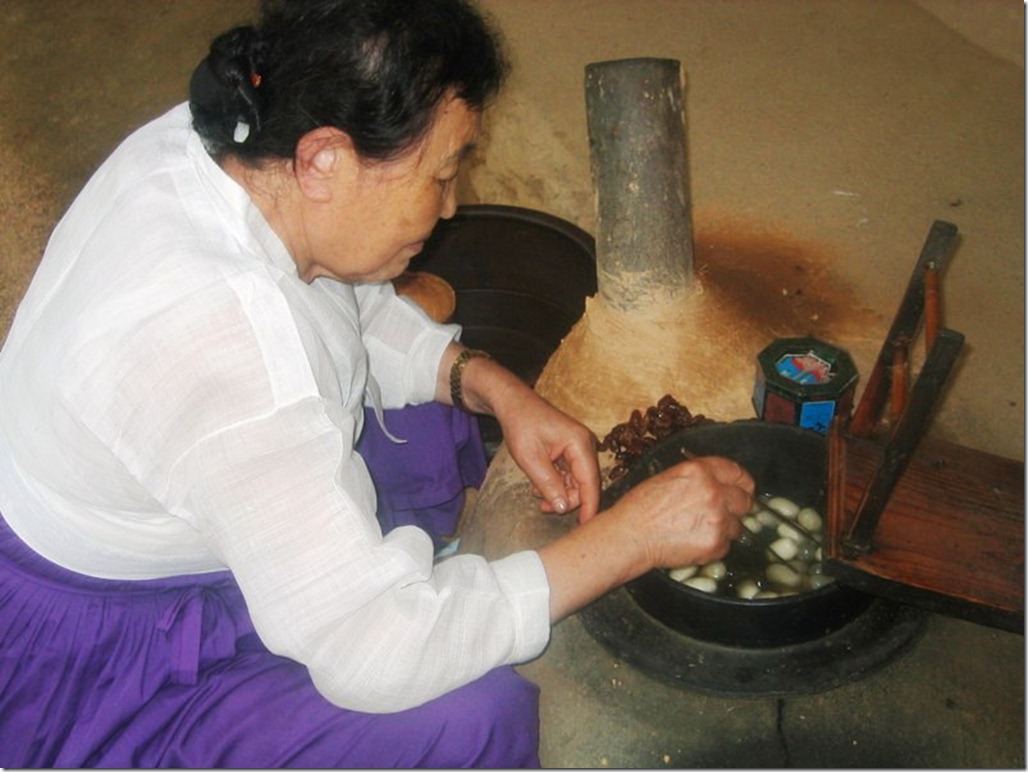

In an open area in the middle of the village, we came upon some traditional Korean games, the see-saw and arrow throwing. In a simulation of the ancient Korean game, some locals tried to throw three-foot long sticks into narrow jars. (Arrow throwing is akin to the western carnival game of throwing balls through holes on a backboard.) The Korean see-saws were thick planks of wood straddling sacks of hay. My son enjoyed giving it a try. Daddy put his foot on the plank and bounced him up and down. He laughed and held on for dear life as daddy rocked him. He then took over and did it himself.
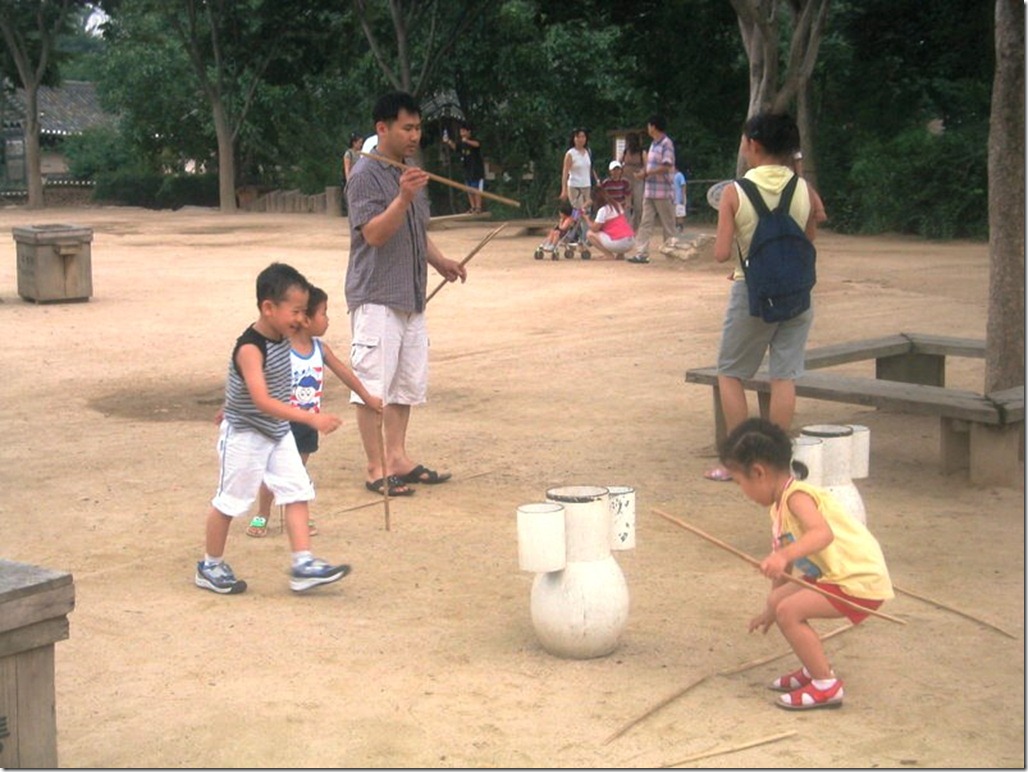
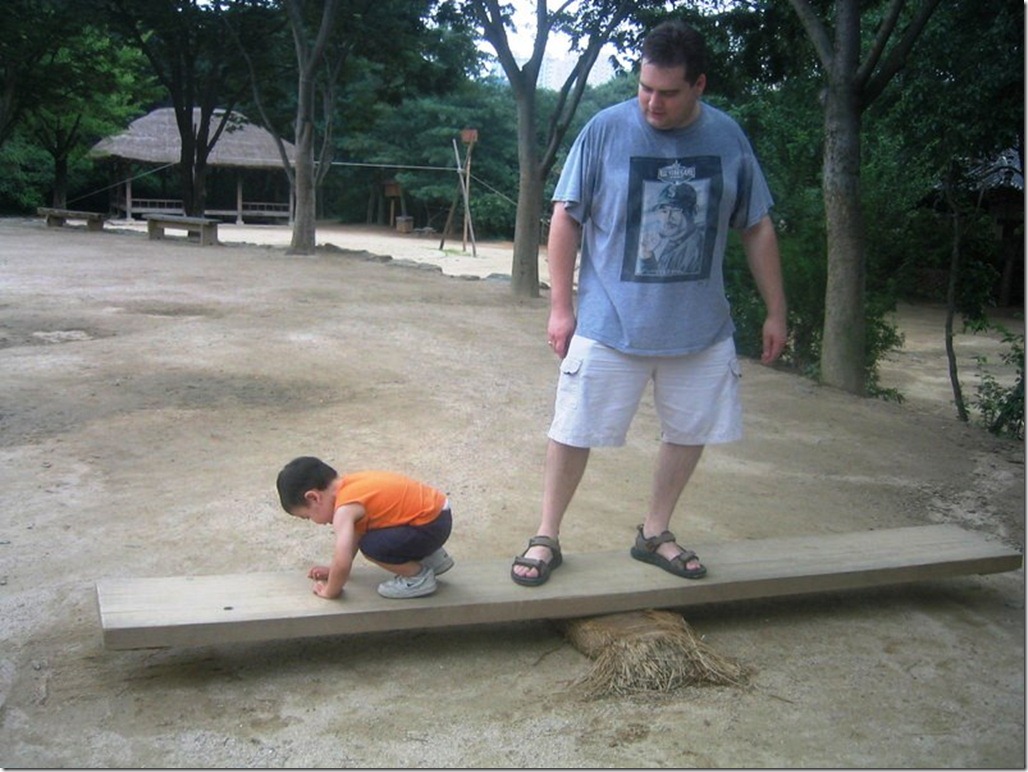
Ready for a treat, we went to the “Bazzar” and stopped for ice cream. I loved the atmosphere of the open-air market filled with traditional buildings and workers dressed in peasant clothing. At that moment, contemporary Seoul seemed far away.
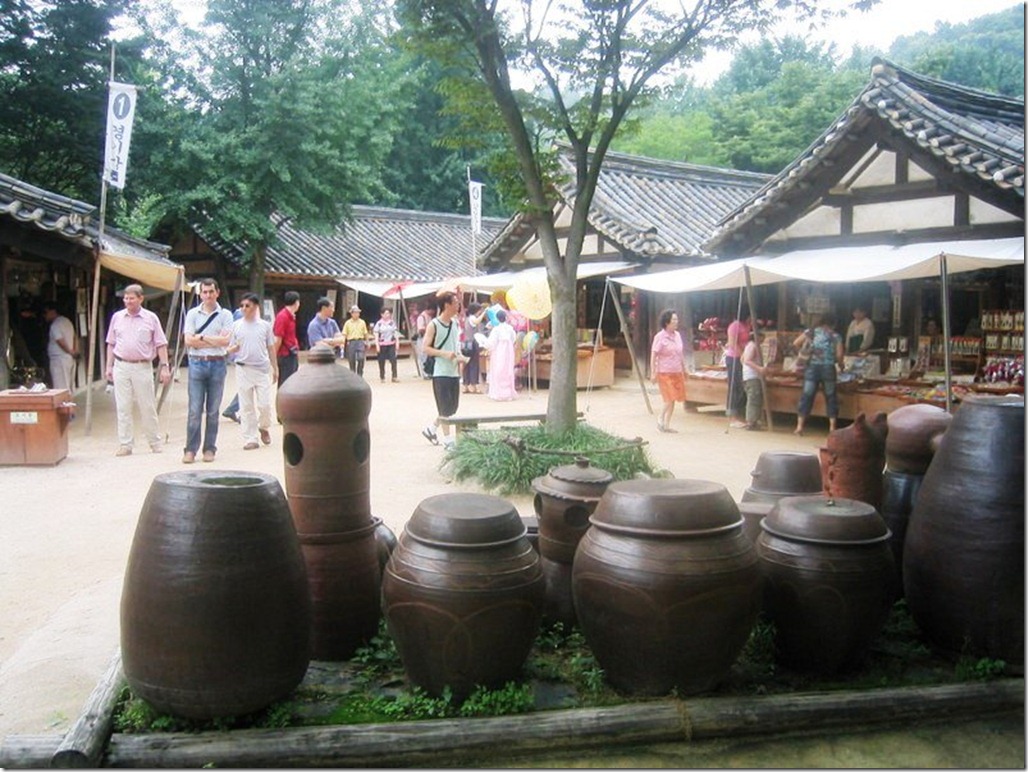
We left the “Bazzar” and crossed the Arch Stone Bridge, a picturesque structure straddling a gentle river flowing through the village.
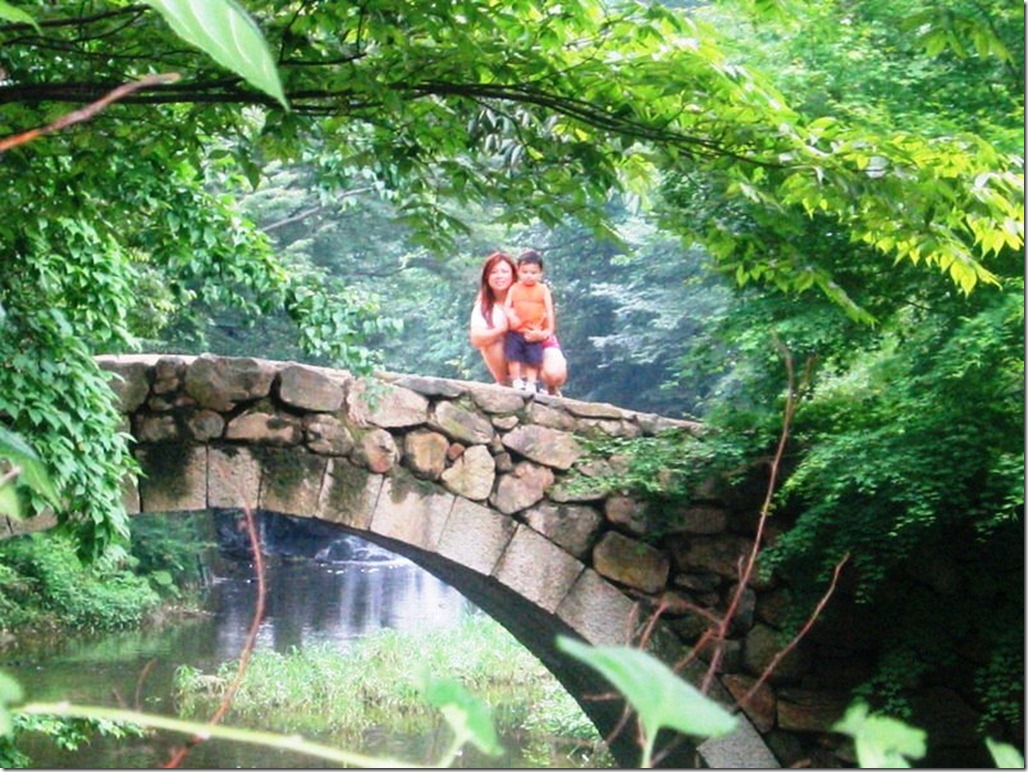
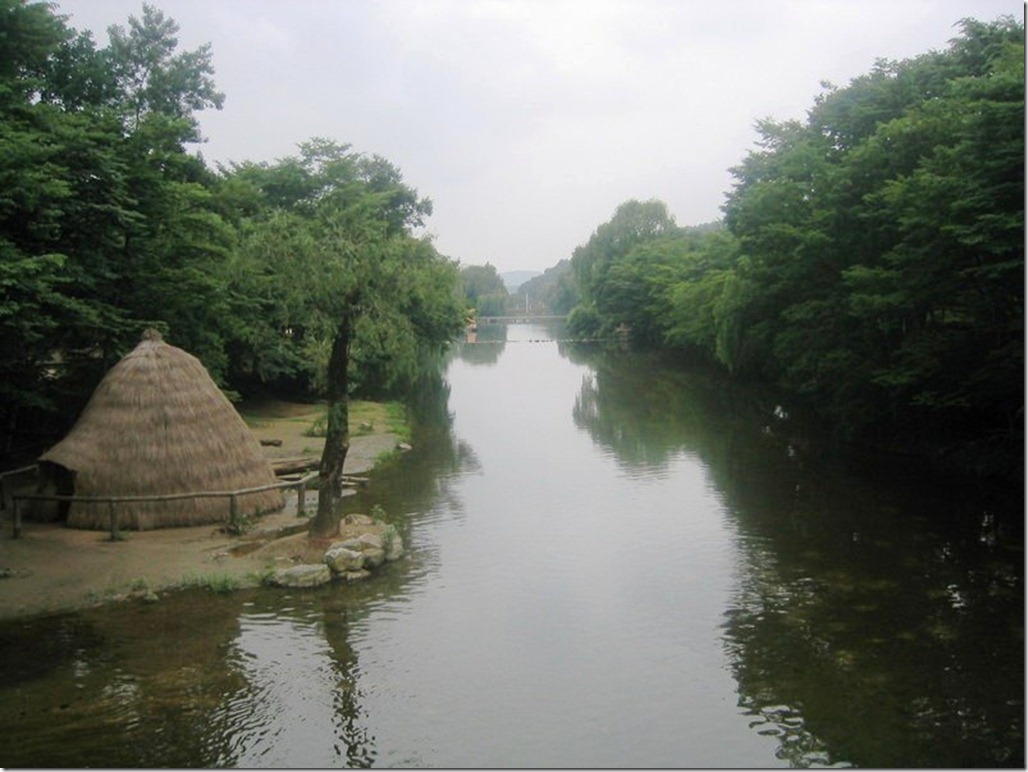
We wandered along the far bank of the river through a group of farmhouses modeled after those found on Jeju Island made of volcanic rock. For the first time, my son saw farm animals that he knew well but had never seen before—rabbits, chickens, pigs, goats, and geese. His eyes lit up when he saw the real version of animals he had read about in books and saw as toys. He especially liked the rabbits. Unfortunately, the geese were unruly. We stood about ten feet from them until four decided to come after us. We backed away quickly and moved out of their territory. I wasn’t about to get bitten by a goose and end up getting rabies shots. That would have been a lousy end to a beautiful day.
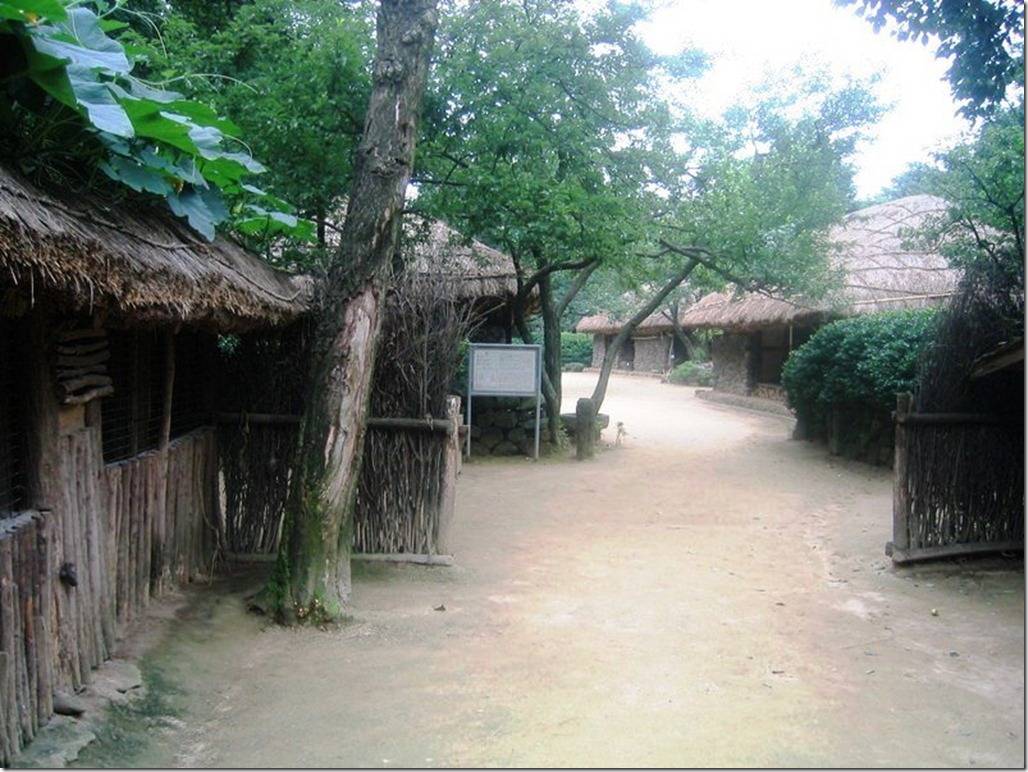
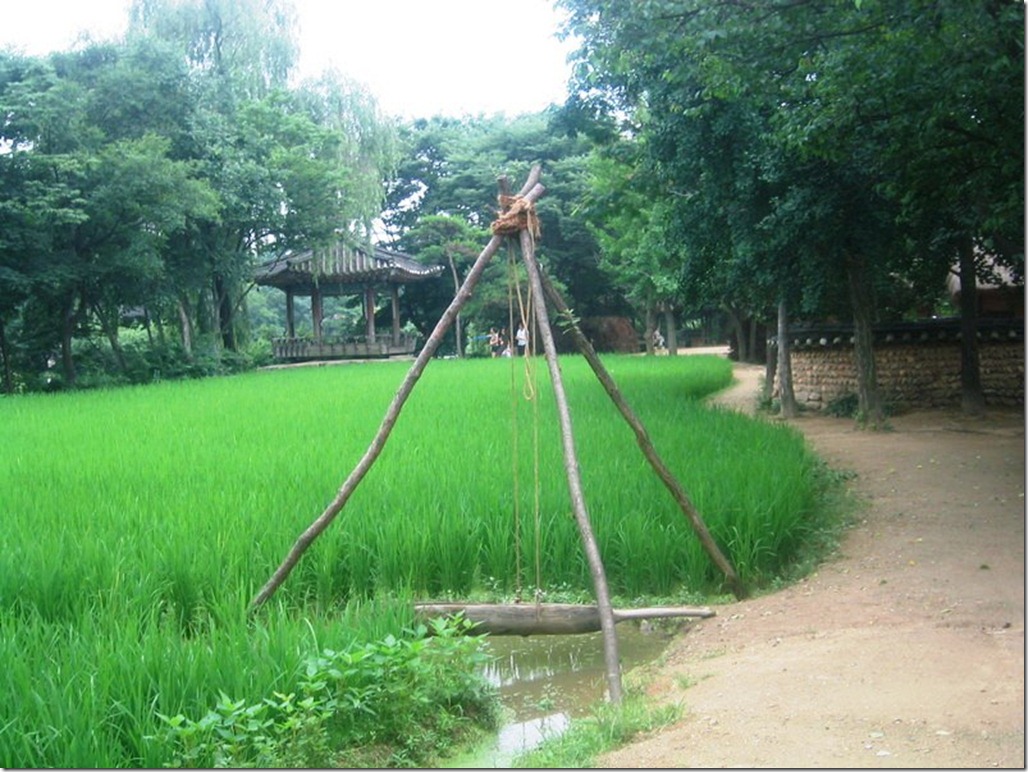
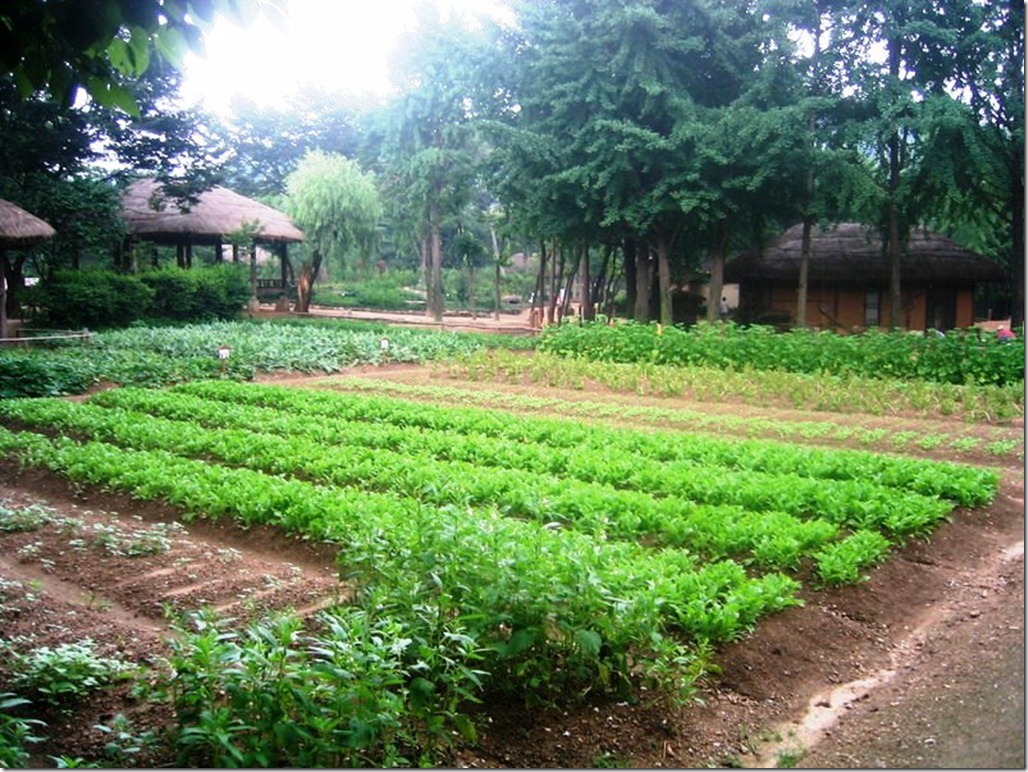
I enjoyed trying some of the rudimentary milling equipment, a gristmill and hammermill. It made me thankful that I buy my bread, rice, and pasta at a store.
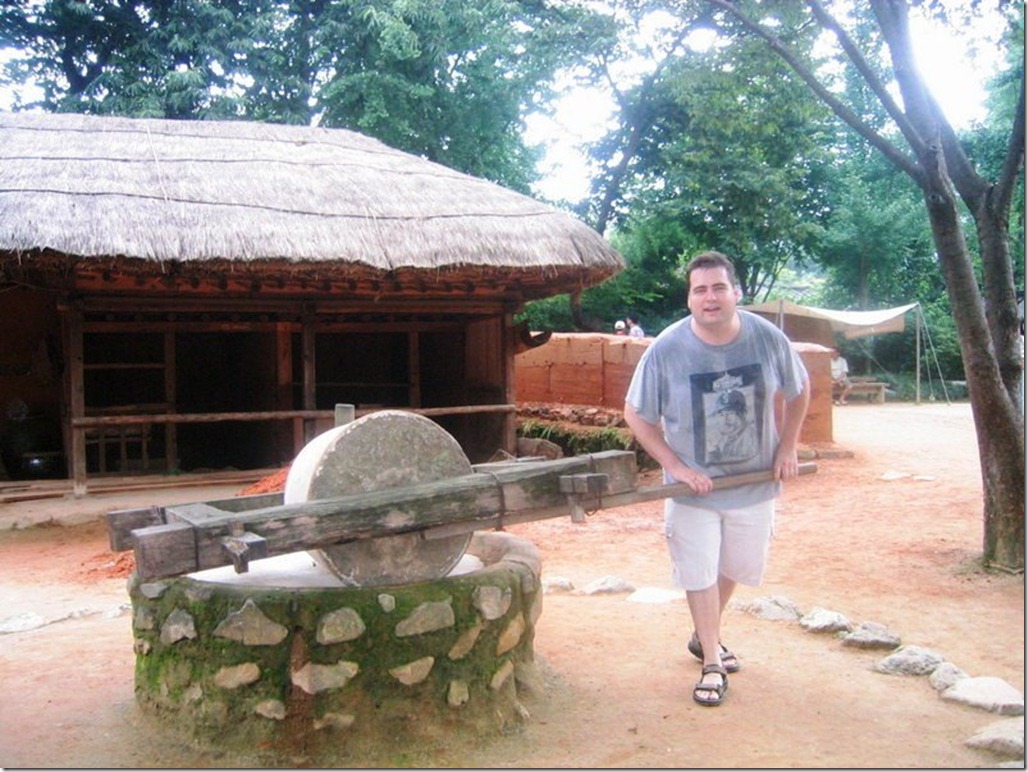
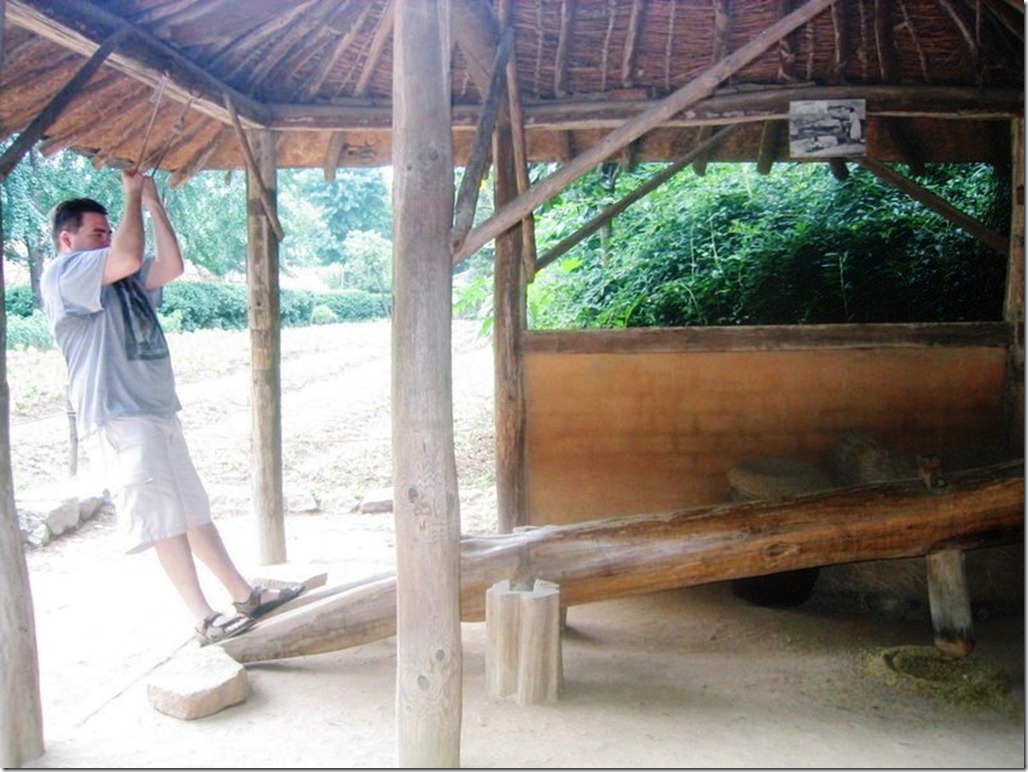
After wandering through replicas of old Jeju Island farms, we ventured into an open area where a Korean acrobat on a high wire performed a delicate balancing act. He did a fabulous job defying gravity, bouncing up and down on the rope, sitting on it, straddling it, and balancing himself on top. He balanced himself grasping only a handkerchief in one hand and a large white fan in the other. He used the fan to control his balance, waving it slowly, then feverishly to bring his body back into equilibrium. Dressed in a white traditional costume, he wore a black Korean-style hat reminiscent of a Korean sage. I enjoyed his performance.
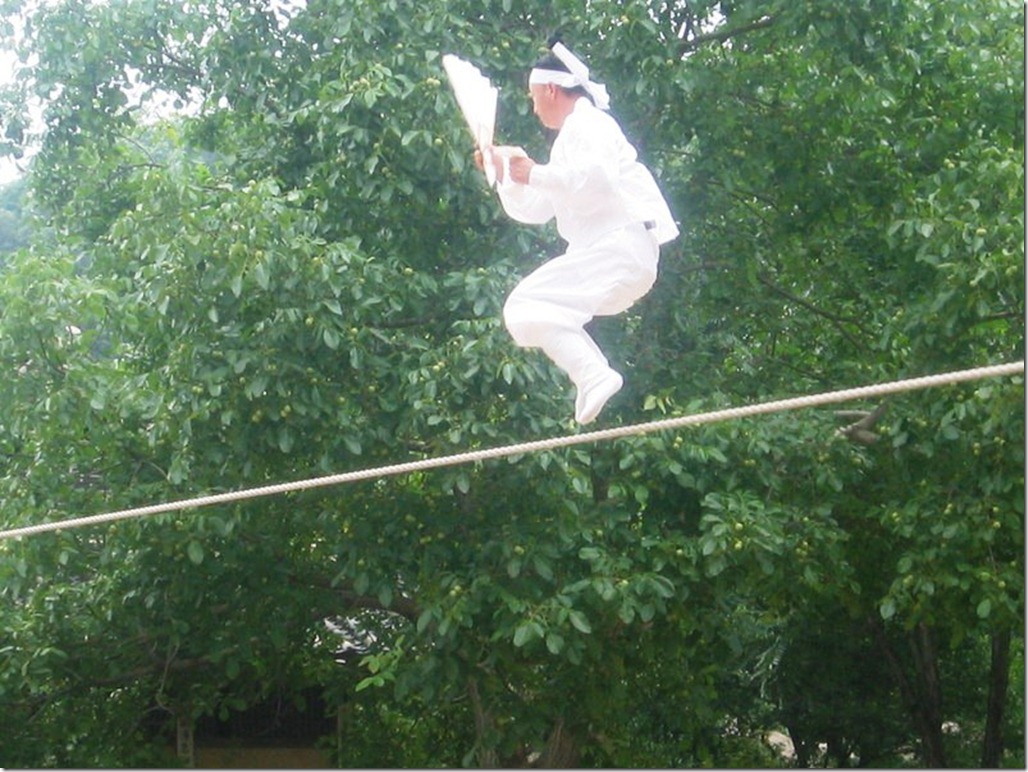
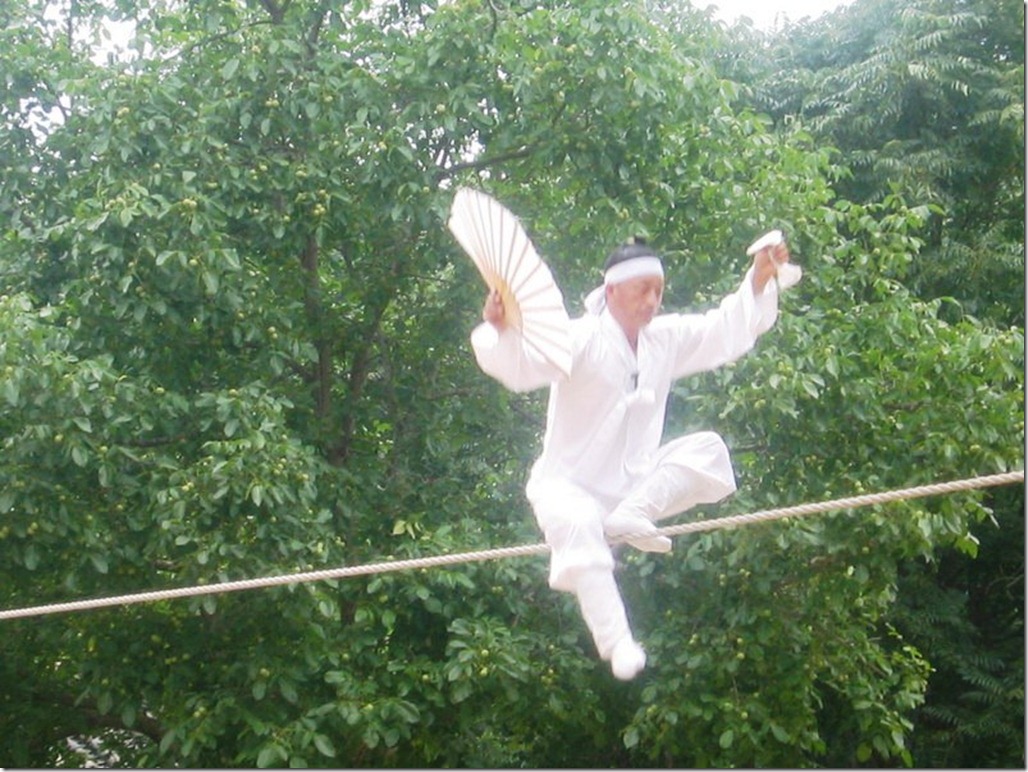
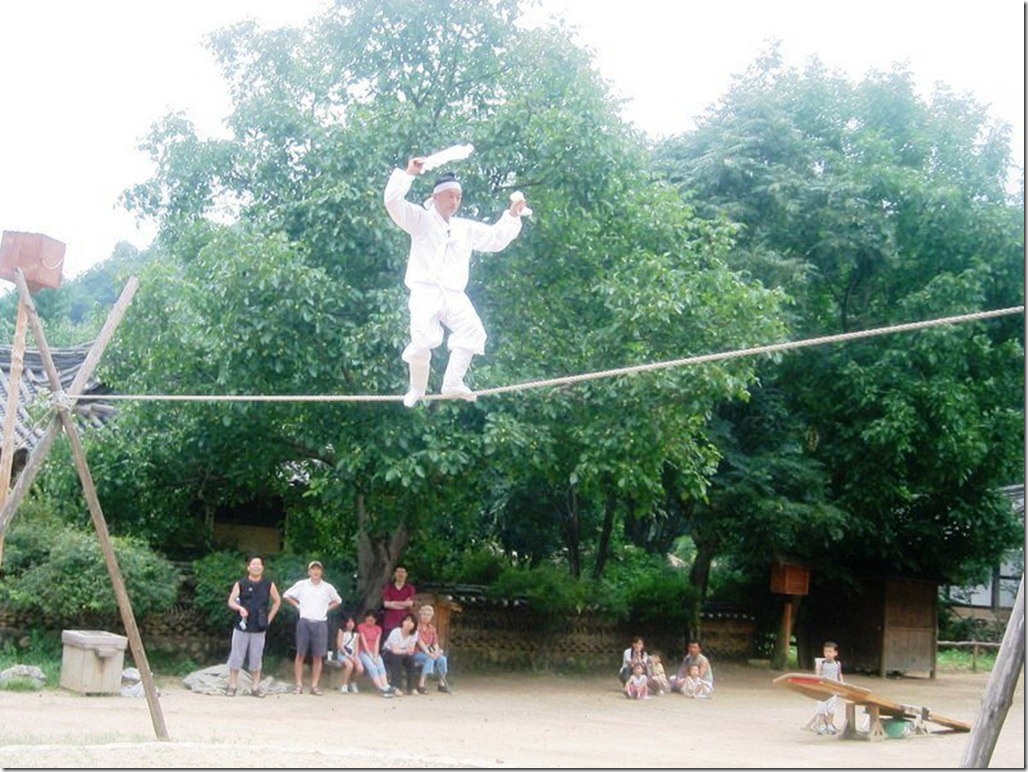
We then headed to the Manor House, where we witnessed a traditional Korean wedding. The condensed ceremony that took place in the main courtyard highlighted some of its interesting aspects. As the ceremony began, the groom took his place to the east of the wedding altar and faced west, sitting cross-legging awaiting his bride. Symbolic foods lay atop the altar, waiting to be parceled to the bride and groom. An old sage to the north of the altar faced south and read the vows from a wedding book.
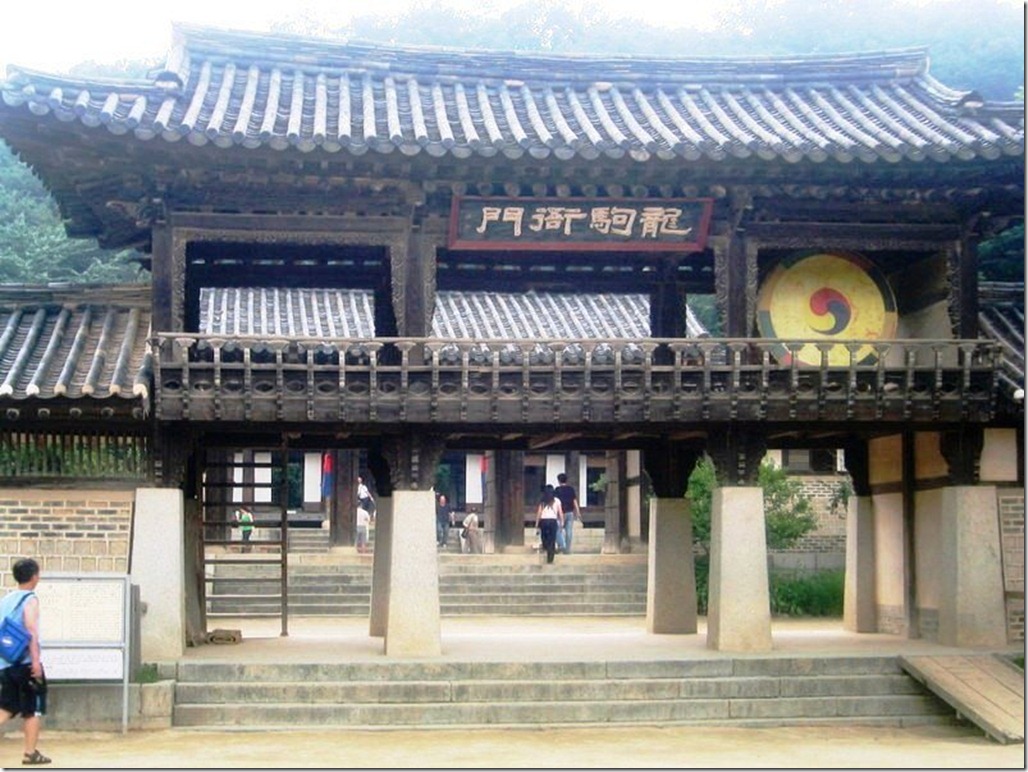
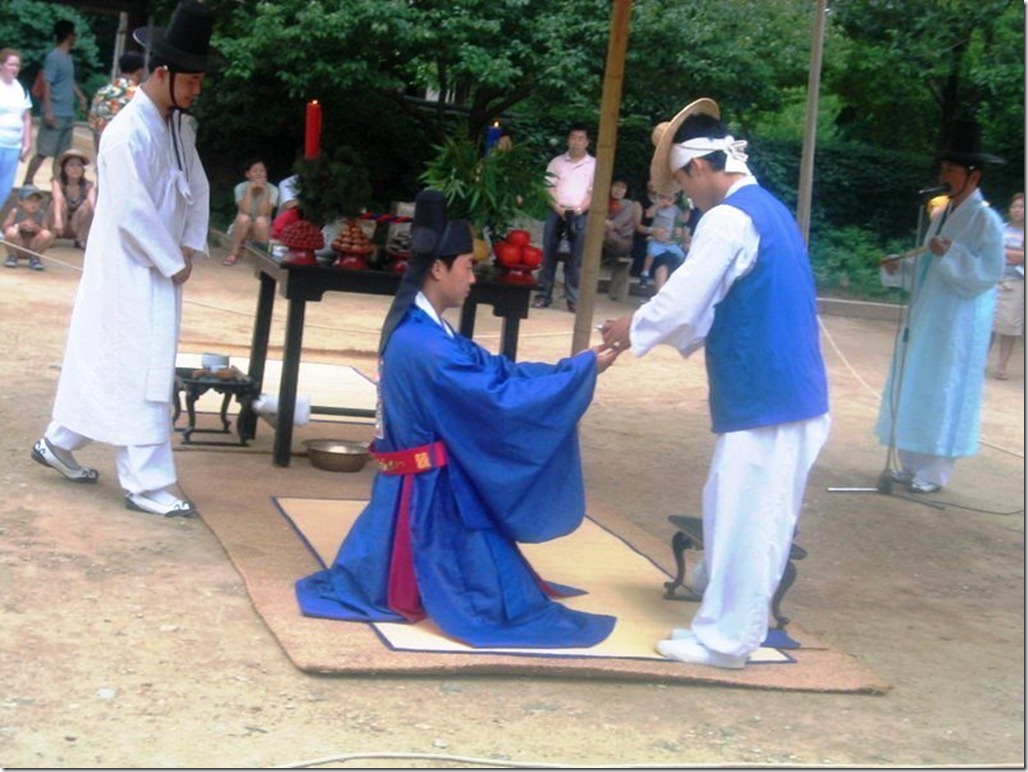
A few minutes later the sage called for the bride to come. She left the Manor House and descended its steps, entering the courtyard with two female assistants. They escorted her to the altar and helped her kneel on both knees to the east so that she faced towards her future husband facing west.
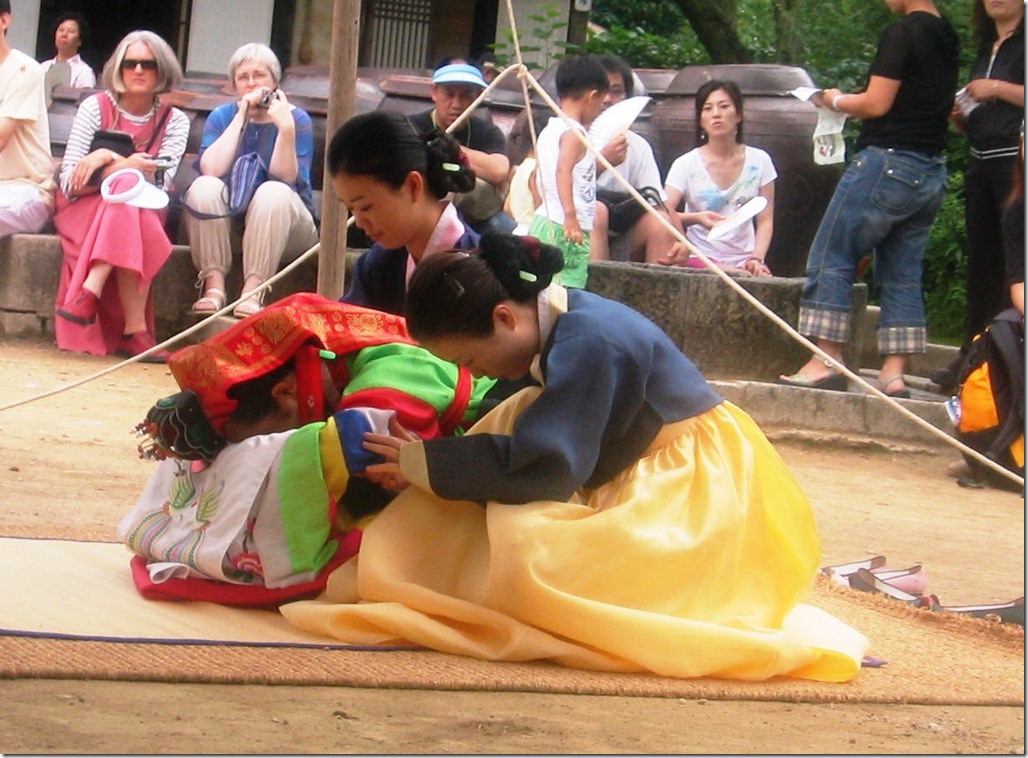
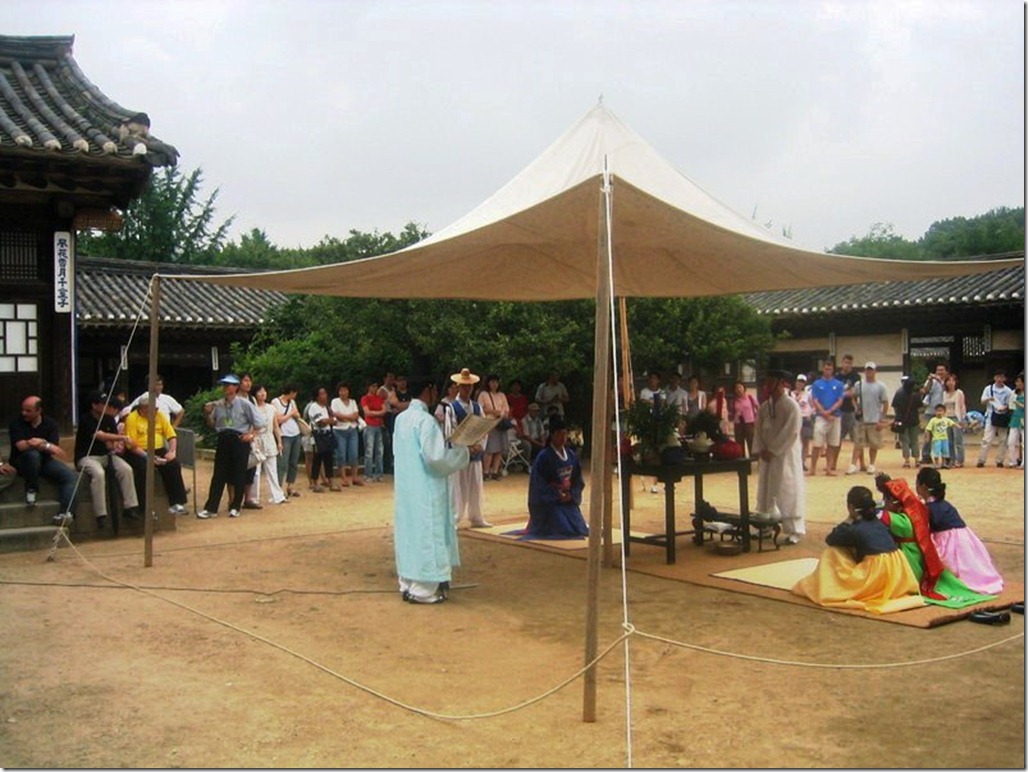
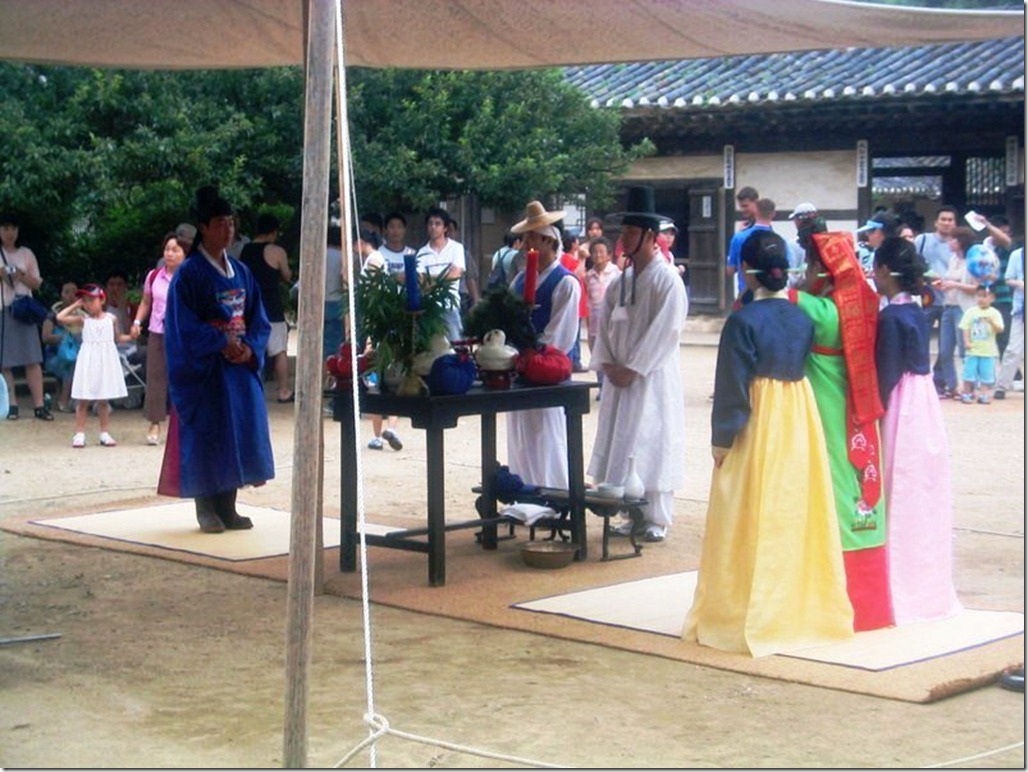
As the sage chanted the wedding vows, assistants offered food and drink to the betrothed couple. They ate chestnuts, a symbol of the yangban, or Korean aristocracy, and other delicacies. The bride’s arms were crossed and positioned over her face so that the groom could not see her until the ceremony ended. Prompted by the sage, the groom and bride stood and bowed to each other. Dressed in hanbok, they made a handsome couple.
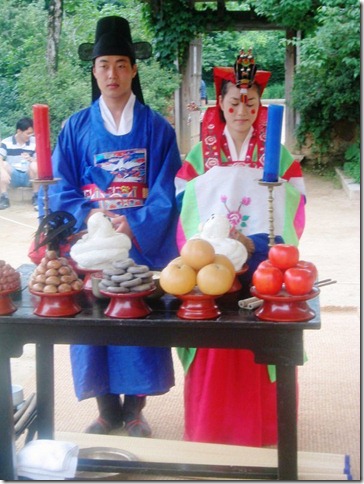
The sage pronounced the couple married, and the ceremony ended as quickly as it started. Having seen many weddings around the world, I enjoyed this unique depiction of an age-old tradition.
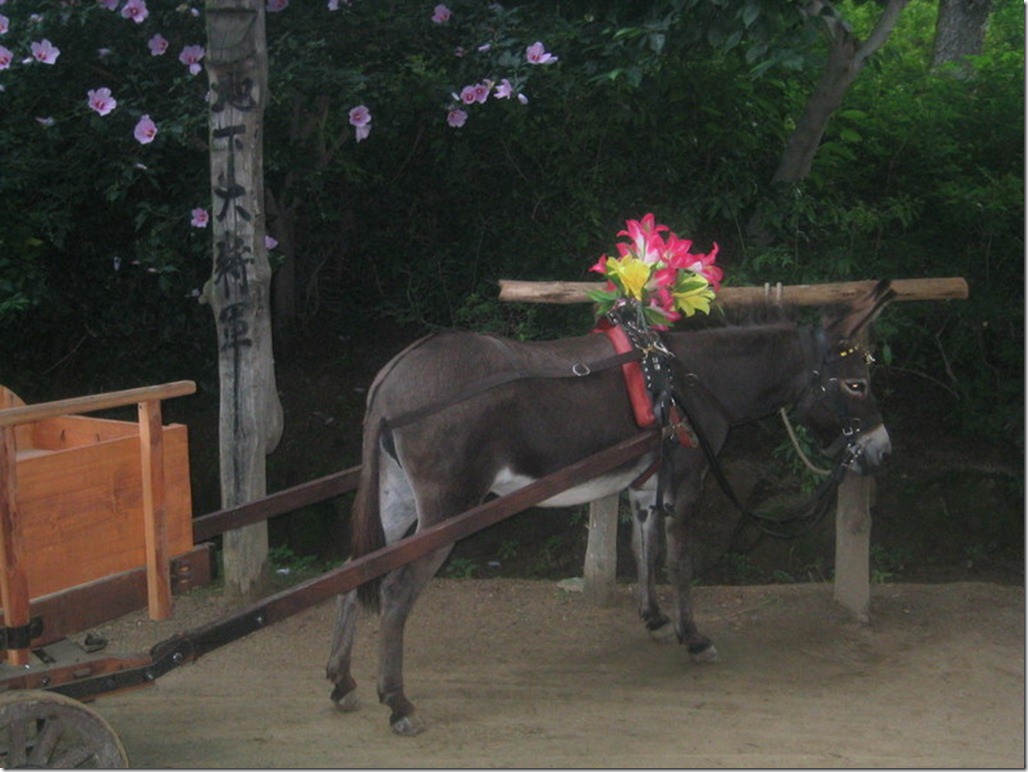
After the ceremony ended, we headed to a modern children’s amusement park in the southern portion of the folk village across the river. Filled with amusements, modern architecture, and contemporary sculptures, it was much different than the rest of the village. We took our son on several rides. He had been such a good sport putting up with our wandering that we knew we needed to treat him to something he would enjoy. He first rode a roving mechanical dog. He was apprehensive about getting close to real animals but had no qualms climbing aboard this slow-moving “dog.” Afterwards, mommy took him on a carrousel for his first merry-go ride, and daddy took him on his first train ride aboard the children’s train. He had a great time.
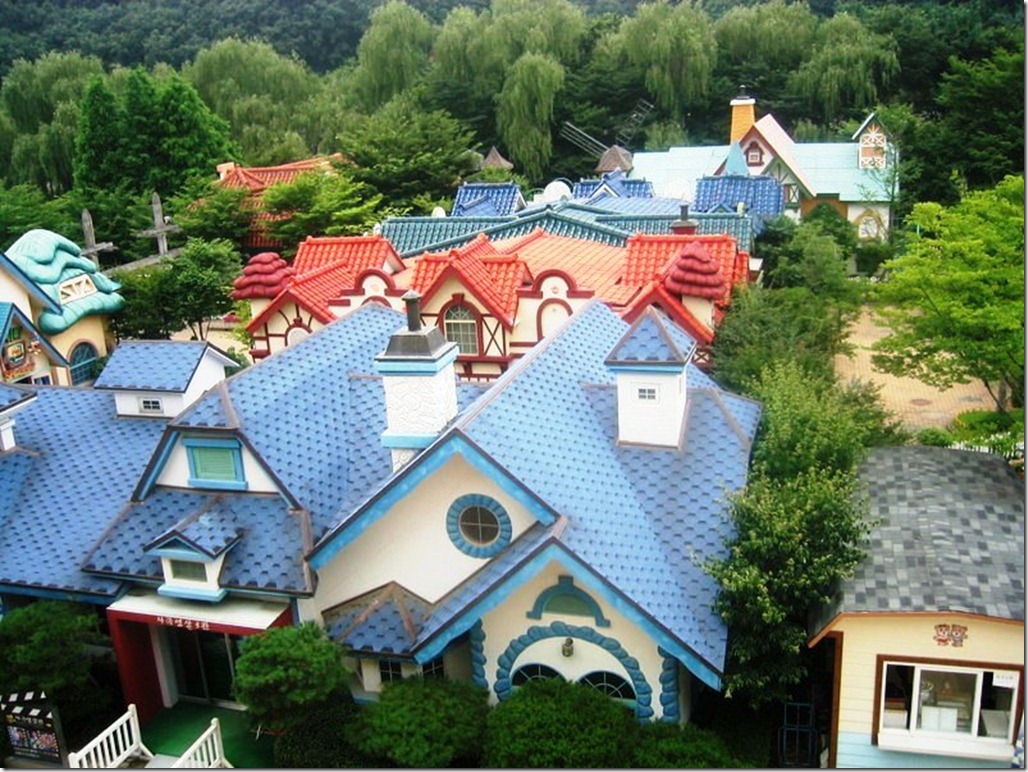
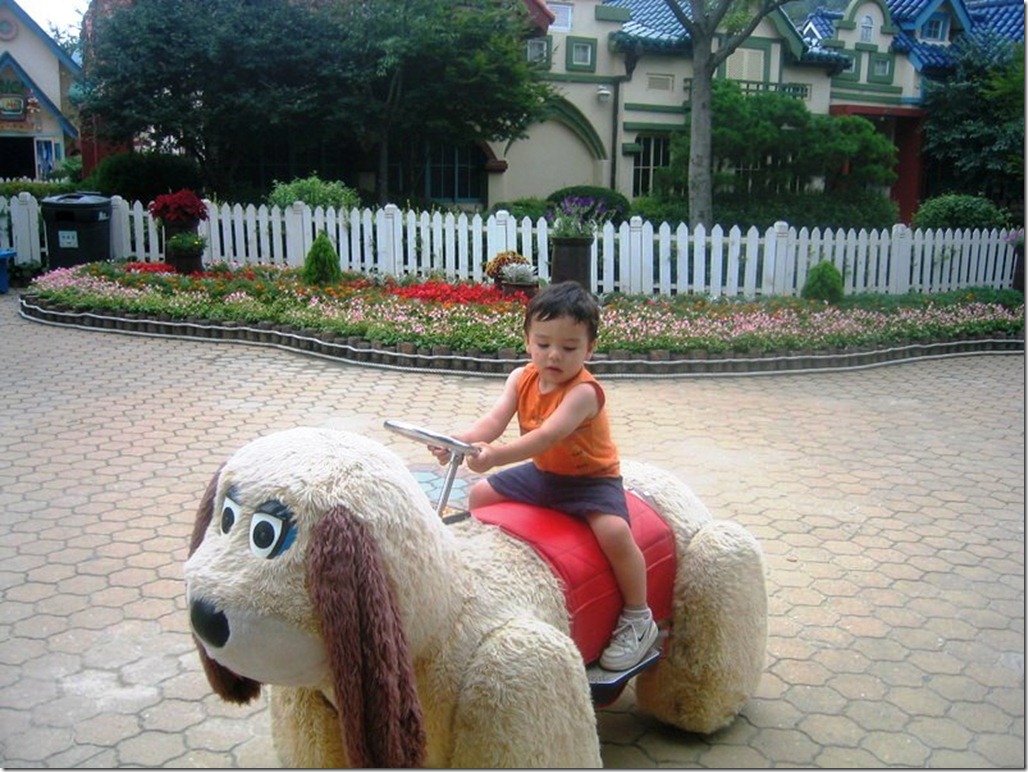
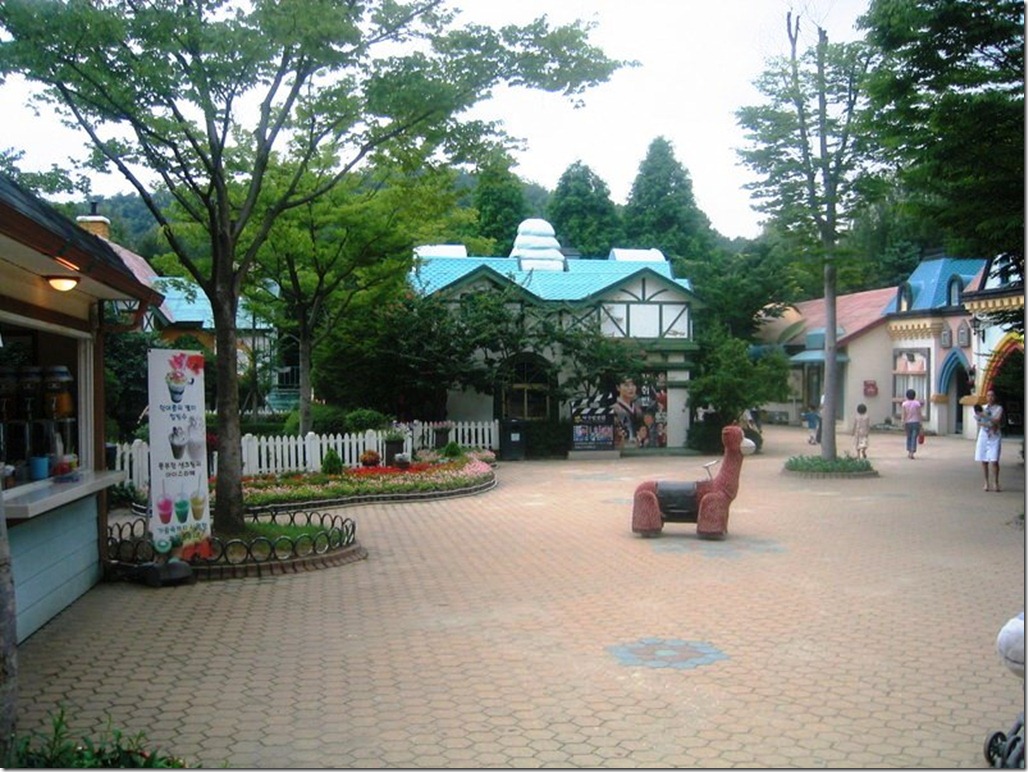
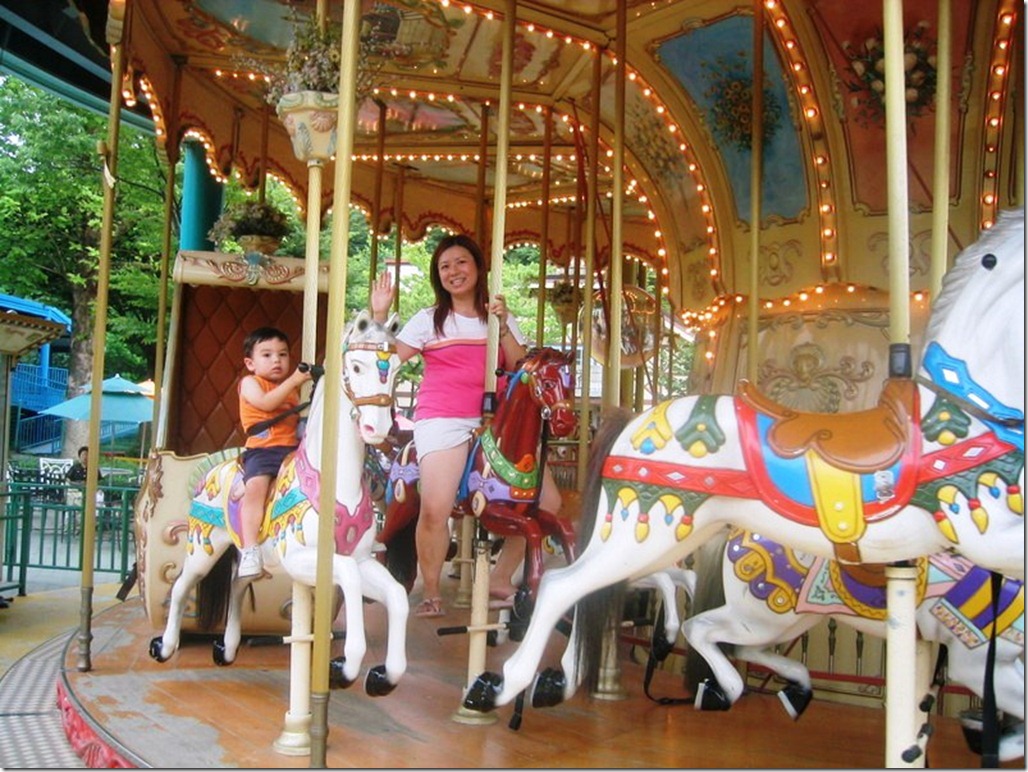
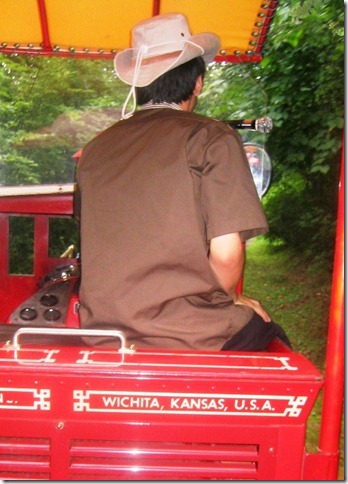
Our son had so much fun that he didn’t nap all day long. Once we finished and went home, he was out like a light. I was tired too and wanted to do the same but had to wait until home to crash. Our fun adventure at the Korean Folk Village wore all of us out.
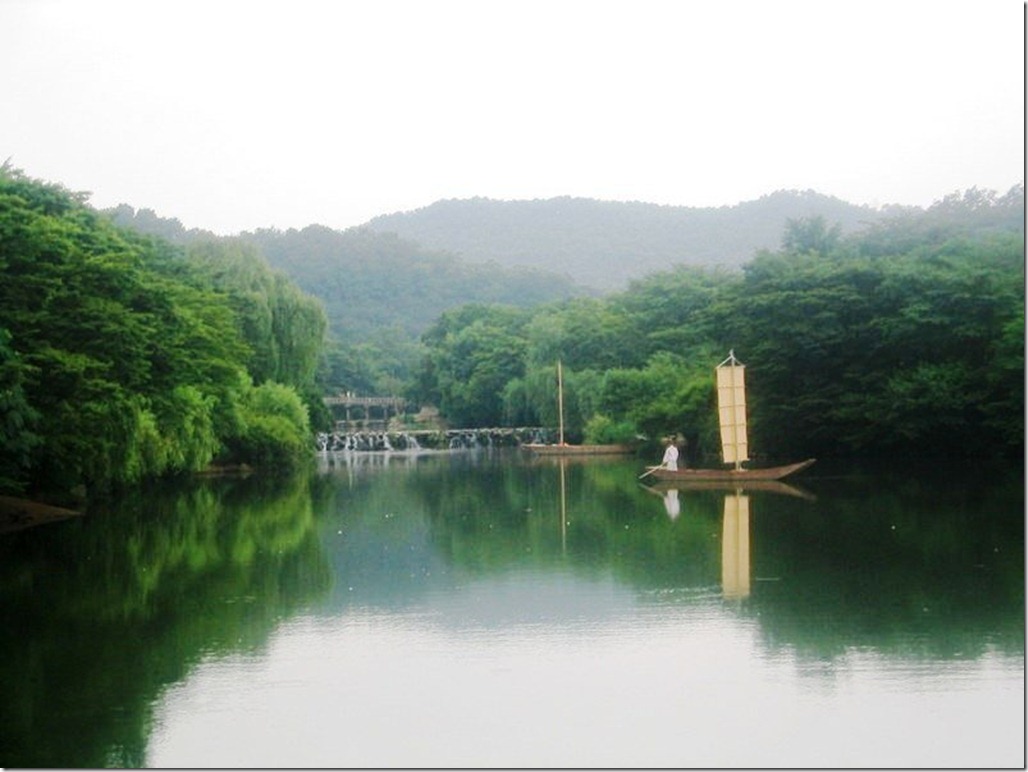
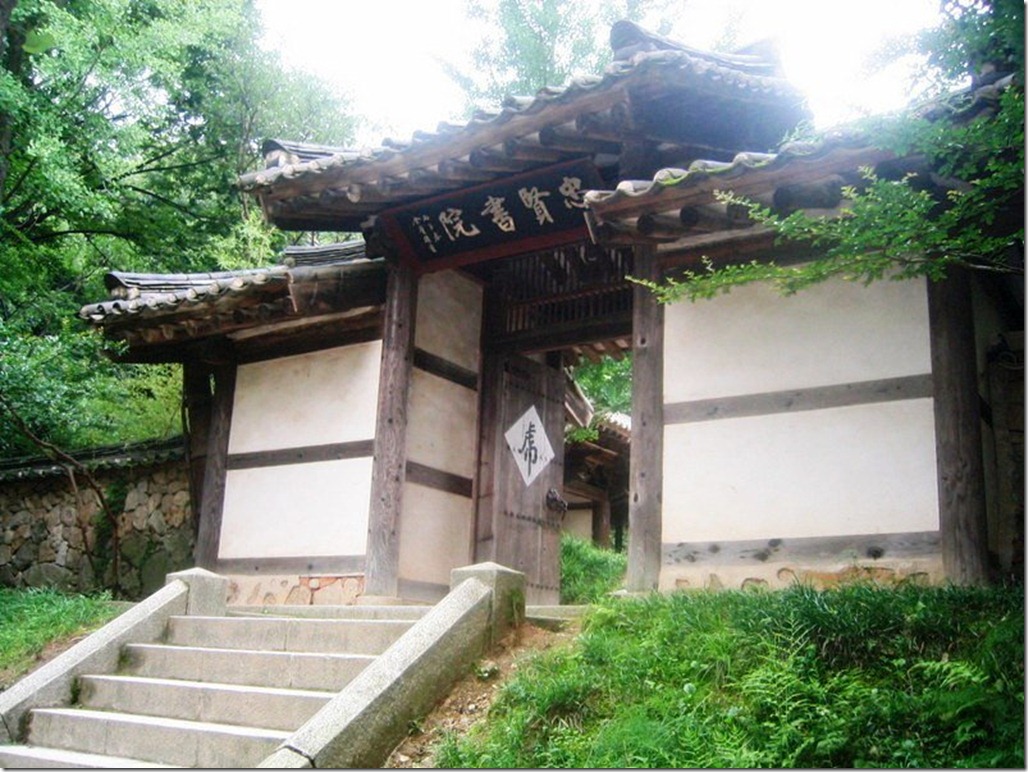
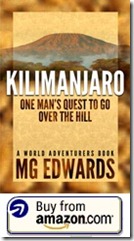 M.G. Edwards is a writer of books and stories in the mystery, thriller and science fiction-fantasy genres. He also writes travel adventures. He is author of Kilimanjaro: One Man’s Quest to Go Over the Hill, a non-fiction account of his attempt to summit Mount Kilimanjaro, Africa’s highest mountain and a collection of short stories called Real Dreams: Thirty Years of Short Stories. His books are available as an e-book and in print on Amazon.com and other booksellers. He lives in Bangkok, Thailand with his wife Jing and son Alex.
M.G. Edwards is a writer of books and stories in the mystery, thriller and science fiction-fantasy genres. He also writes travel adventures. He is author of Kilimanjaro: One Man’s Quest to Go Over the Hill, a non-fiction account of his attempt to summit Mount Kilimanjaro, Africa’s highest mountain and a collection of short stories called Real Dreams: Thirty Years of Short Stories. His books are available as an e-book and in print on Amazon.com and other booksellers. He lives in Bangkok, Thailand with his wife Jing and son Alex.
For more books or stories by M.G. Edwards, visit his web site at www.mgedwards.com or his blog, World Adventurers. Contact him at me@mgedwards.com, on Facebook, on Google+, or @m_g_edwards on Twitter.
© 2012 Brilliance Press. All rights reserved. No part of this work may be reproduced or transmitted without the written consent of the author.




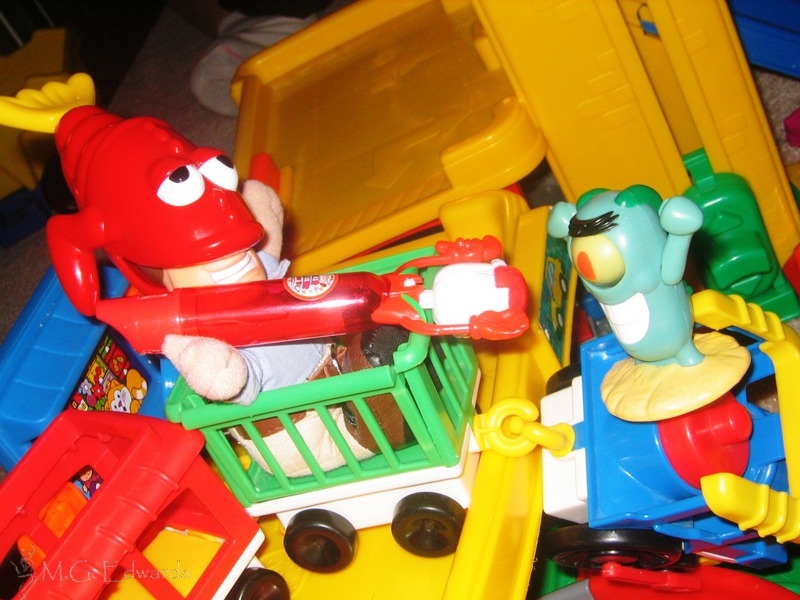
 Fishman saves the day again! Three cheers for Fishman!
Fishman saves the day again! Three cheers for Fishman!












